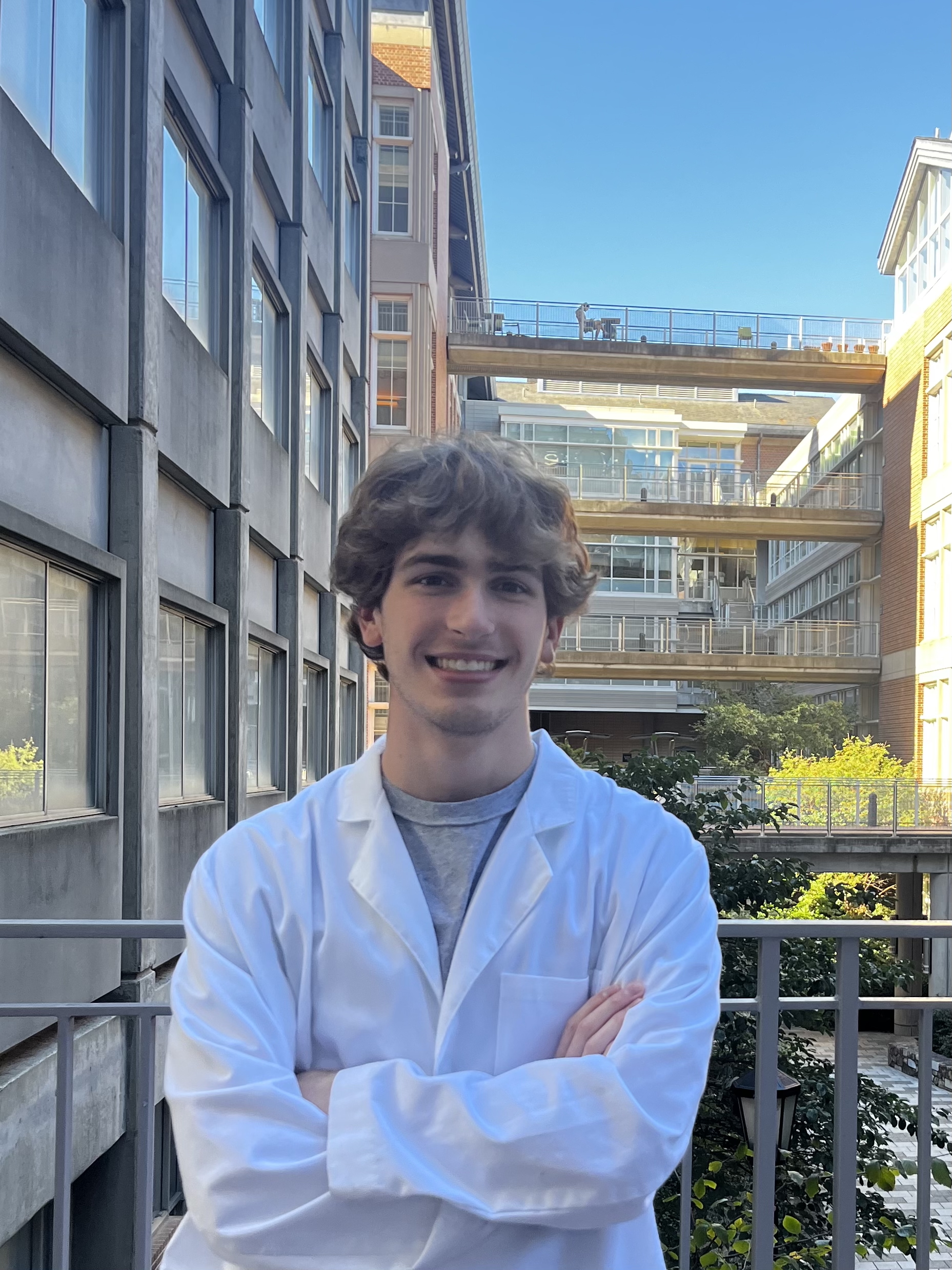JR Cobb Finds a Simple Way to Control Complex Chemical Reactions—With Simple Salts

In the Miller Group at UNC-Chapel Hill, chemistry undergraduate JR Cobb works with special molecules called catalysts, which make reactions happen faster and allow new reactions to occur. His goal is to create catalysts that can be switched on and off at will, offering more precision, safety and sustainability than traditional methods.
October 23, 2025 I By Dave DeFusco
In the Miller Group at UNC-Chapel Hill, chemistry undergraduate JR Cobb studies how adding simple salts like lithium or sodium can control chemical reactions. He works with special molecules called catalysts, which make reactions happen faster and allow new reactions to occur. Catalysts are essential in making everything from medicines to fuels, but once they’re active, they usually can’t be controlled. Cobb’s goal is to create catalysts that can be switched on and off at will, offering more precision, safety and sustainability than traditional methods.
“We talk a lot about catalysis and its importance in pharmaceuticals and energy,” said Cobb. “But what we don’t often think about is that a lot of the most iconic catalysts, like the Grubbs or Suzuki catalysts, are always on. Once they’re in the mix, they react whether you want them to or not.”
That lack of control can make it difficult to run multiple reactions in one pot, since each step might require a different catalyst. Cobb’s system changes that. Under the supervision of Alex Miller, professor of chemistry and director of graduate studies, he works with catalysts that contain crown ethers—ring-shaped structures that can grab onto small metal ions, or cations, such as lithium or sodium. By adding or removing salts of these cations, he can switch the catalyst between its active and inactive forms.

In these catalysts, oxygen atoms within the crown ether ring normally hold tightly to a metal center—the heart of the catalyst. When a sodium or lithium salt is added, those oxygens instead bind to the salt’s cations, loosening their grip on the metal and freeing up space for a reaction to occur.
“You need an open site on the metal center for catalysis,” said Cobb. “Adding the salt weakens those bonds and opens that site. If you want to turn it off again, you can add something like chloride, which precipitates as table salt and makes the catalyst inactive again.”
The beauty of the system lies in its precision and simplicity. “You can do these stepwise reactions with different catalysts and salts,” he said. “That gives you an exquisite level of control over when and how the catalysts react.”
Crown ethers are key to making this possible. Their ring structure, with oxygen atoms positioned just right, forms the perfect cradle for specific cations. For instance, a crown ether with five oxygen atoms is ideal for lithium ions, while one with six fits sodium.
“You need that big ring,” he said. “If you just have oxygens floating around, it doesn’t work. The ring has to capture the cation tightly enough to loosen the bond to the metal center.”
Unraveling exactly how this control works hasn’t been easy. Early on, researchers debated whether the salt sped up the reaction by changing the electric field around the catalyst or by physically freeing up space on the metal. To find out, Cobb and his colleagues built and tested entirely new catalysts that mimicked parts of the original design.
“We had to rule out the electric field idea,” he said. “That meant synthesizing new catalysts and running lots of tests to see how they behaved. It was definitely the hardest part of the project.”
Recently, Cobb extended the system from isomerization reactions to hydrogenation, a common transformation used in making pharmaceuticals and fuels. Many industrial catalysts rely on heavy metals that can be toxic or unstable. “Palladium on carbon is a classic hydrogenation catalyst,” he said. “It works great, but it can catch fire in air. Our catalysts can do similar chemistry without those safety concerns.”
Cobb’s switchable system could also cut down on chemical waste. In traditional multistep reactions, chemists often have to purify the product after each stage—an energy- and material-intensive process.
“With cation-controlled catalysis, you can run several reactions in one vial,” said Cobb. “For example, with two catalysts in the reaction mixture, you could just add lithium for the first step, then sodium for the next and purify once at the end. It saves time and materials, and reduces waste.”
He hopes future work will explore more complex tandem reactions where multiple changes occur in sequence within the same mixture.
A typical day in lab involves a mix of experimental design, synthesis and catalysis in using high-throughput experimentation for catalysis in the department. Cobb designs new experiments to test mechanistic hypotheses, collects reaction kinetics data using NMR spectroscopy and tests how the crown ether-containing catalysts can enable new reactions.
“It’s a lot of high-throughput chemistry,” he said. “But building this atom-by-atom understanding is what helps us design the next generation of catalysts. It’s about control—control over reactivity, over waste and, ultimately, over how chemistry shapes a greener future.”

